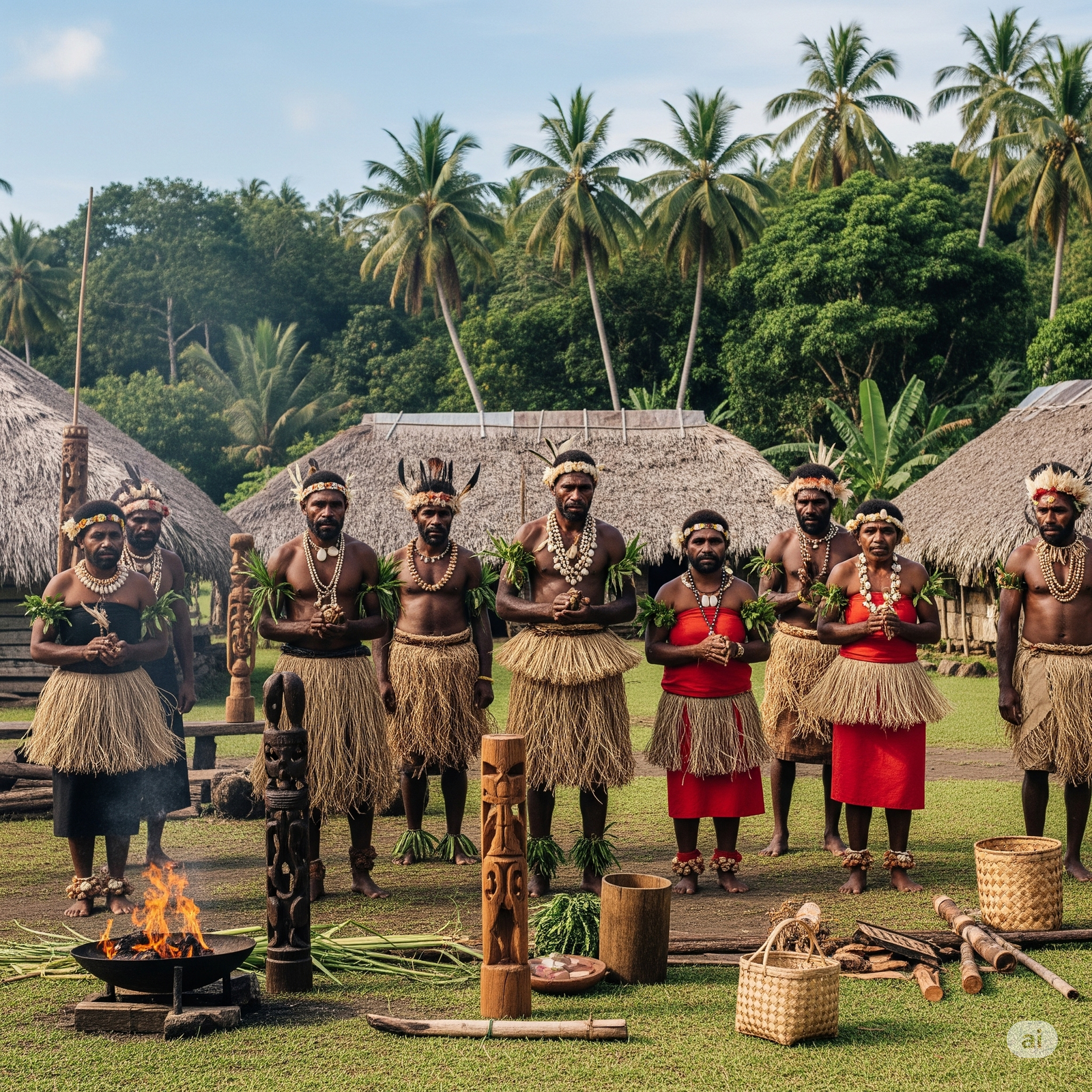Vanuatu. The name alone conjures images of pristine beaches, lush rainforests, and active volcanoes. But beneath this idyllic surface lies a profound and living force that shapes every aspect of daily life, governance, and identity: Kastom.
More than just “custom” in the Western sense, kastom is a Bislama (Vanuatu’s national language) word that encompasses the entire traditional culture of Melanesia. It’s an intricate web of beliefs, practices, laws, spiritual understandings, social norms, and oral histories passed down through generations. In Vanuatu, where over 100 distinct languages are spoken across its 80+ islands, kastom provides a unique framework for society, a vibrant counterpoint to imported Western systems.
Kastom as the Foundation of Society
For the majority of Ni-Vanuatu (the people of Vanuatu), especially in the outer islands, kastom isn’t just an historical curiosity – it’s the air they breathe.
- Land Ownership: Perhaps the most critical aspect of kastom is its role in land ownership. Almost all land in Vanuatu is customary land, meaning it is owned by families, clans, or communities according to traditional inheritance and usage rights. This often involves complex systems of lineage and oral history. Any development, be it a resort or a new road, must navigate these kastom land claims, making respect and negotiation paramount. The Customary Land Management Office (CLMO) even formalizes some customary institutions to resolve land disputes, highlighting kastom’s legal weight.
- Social Harmony and Governance: Chiefs, often referred to as “Big Men,” play a vital role in upholding kastom. They are traditional leaders who resolve disputes, make community decisions, and ensure social order based on customary law. While Vanuatu has a parliamentary democracy, the influence of kastom governance is undeniable, particularly at the village level, where it often supersedes formal legal systems in day-to-day matters. The National Council of Chiefs (Malvatumauri) acts as a national advisory body, ensuring kastom’s voice is heard at the highest levels of government.
- Community and Family: Kastom places immense value on communal living, strong family ties, and collective responsibility. Extended families often live together, sharing resources and supporting one another. This fosters a powerful sense of belonging and mutual aid that forms the backbone of Vanuatu’s society. Respect for elders, who are the custodians of kastom knowledge, is deeply ingrained.
The Vibrancy of Kastom in Daily Life
Kastom isn’t static; it’s a living, evolving tradition that manifests in countless ways:
- Ceremonies and Rituals: From initiation rites and marriage ceremonies to elaborate pig exchanges and harvest festivals, kastom is celebrated through vibrant traditional dances, music (often featuring unique instruments like water drums), and feasts. The famous Nagol (Land Diving) on Pentecost Island, the spiritual precursor to bungee jumping, is a powerful example of a kastom ritual that draws global attention.
- Cultural Practices: Everyday life is infused with kastom. This includes traditional attire (like the Nambas on Malekula), traditional methods of food preparation (such as laplap), the significance of specific plants and animals, and traditional healing practices.
- Kava: The consumption of kava, a mildly sedative root drink, is deeply rooted in kastom. Nakamals (traditional kava bars) are often male-dominated spaces where kava is consumed, news is exchanged, and community matters are discussed – a ritualized form of social and political gathering.
- Oral Traditions and Art: Since much of kastom is not written down, storytelling, myths, legends, and communal histories are passed orally through generations. Unique art forms like sand drawing (a UNESCO-recognized intangible cultural heritage) also serve as a means of transmitting knowledge and stories.
Navigating Kastom: For Visitors and Development
For visitors to Vanuatu, understanding and respecting kastom is paramount. It allows for deeper, more meaningful interactions with locals and ensures your presence is welcomed. Dress modestly in villages, ask permission before taking photos, and always be open to learning.
For modern development, the interplay between kastom and introduced systems can be complex. While kastom can sometimes be perceived as a barrier to Western-style “progress” (especially concerning land tenure), it is also recognized as the foundation of Vanuatu’s national identity and a source of strength. Many development initiatives now strive to integrate kastom, recognizing that sustainable progress must align with traditional values and community ownership.
In essence, kastom in Vanuatu is not merely a collection of old traditions; it is a dynamic, living system that continues to shape laws, govern communities, define identity, and provide a unique cultural resilience in a rapidly changing world. To truly experience Vanuatu is to understand, appreciate, and respect the enduring power of its kastom.


Leave a Reply